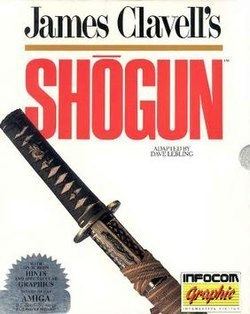6 /10 1 Votes6
Artist(s) Donald Langosy | 3/5 My Abandonware Engine ZIL Initial release date 14 March 1989 | |||||||||||||||||||||||||||||||||
 | ||||||||||||||||||||||||||||||||||
Similar Infocom games, Interactive fiction games | ||||||||||||||||||||||||||||||||||
James Clavell's Shōgun is an interactive fiction computer game written by Dave Lebling and released by Infocom in 1989. Like most of Infocom's games, it was released for several popular computer platforms of the time, such as the Apple II and PC. As the title indicates, the game is based on the book Shōgun by James Clavell. It is Infocom's thirty-third game.
Contents
Plot
The game reproduces many of the novel's scenes, few of which are interconnected in any way. The player assumes the role of John Blackthorne, pilot-major of the Dutch trading ship Erasmus. During a voyage in the Pacific Ocean in the year 1600, the Erasmus is shipwrecked in Japan. Blackthorne must survive in a land where every custom is as unfamiliar to him as the language. After learning some of the society's ways, he is drawn into a political struggle between warlords and falls in love with a Japanese woman. Eventually he embraces Japanese life and is honored as a samurai.
Feelies
Infocom continued its tradition of feelies, or extra items included in the game package. The feelies included with Shōgun were a map representing John Blackthorne's "known world" of 1600, and The Soul of the Samurai, a booklet describing the history and significance of samurai swords.
Reception
Dave Arneson gave Shōgun a negative review in Computer Gaming World. He wrote that the linear nature of the game and poor hints contributed to guess-the-verb and trial-and-error gameplay, and that the illustrations—while "nice to look at"—did not provide information to play the game. Arneson praised the game's large size, but concluded that Shōgun was only "mildly interesting" and inferior to Zork Zero.
